The Commission has recently started its consultation process for the upcoming Heat Pump Action Plan, which aims to support the acceleration of heat pump deployment across the EU. While heat pumps have become a central technology to decarbonise heating, their mass deployment still faces significant hurdles across the EU. This Action Plan is not a new legislative proposal but will seek to consider: regulatory and non-regulatory instruments and enabling tools; financing, communication and skills-use aspects; and multiple levels of action (EU, national and local or regional).
One of the most prominent obstacle is the absence of an available and skilled workforce used to install heat pumps. It has to be said that this fairly new technology is the object of ambitious, yet necessary, goals to reduce emissions and increase energy security, with steep deployment target for which the existing workforce was not prepared.
However, industry and policymakers have now realised the need to address skills and workforce in conjunction with technology rollout plans, as EuropeOn has called for since 2019 with the #Skills4Climate campaign. The EU has recently launched the Year Of Skills to raise awareness more broadly about this issue and provide some much needed momentum to solve it.
On heat pumps specifically, the Commission recently held a workshop as part of this consultation process focusing on the skills dimension of their Action Plan. EuropeOn was invited to share the electrical contractors’ perspective on this key issue.
While electrical contractors can carry out installations of air-to-air heat pumps, they are not the only concerned with heat pump installations as HVAC installers will be needed for air-to-water or geothermal systems. However, electrical contractors have a central role to play in the electrification of heating (mainly through heat pumps) to integrate the latter within buildings and with other energy systems. Indeed, heat pumps require significant electrical capacity (compared to traditional technical building systems) and need to be able to work in coordination with solar PV, building automation and EV charging to reach the highest level of efficiency and self consumption in view of full decarbonization.
This requires a new breed of installers, or rather integrators. The latter are electrical operatives who possess the skills and knowhow to address all electric technologies used in buildings and ensure they work seamlessly with one another for maximum efficiency. EuropeOn members have responded to this new demand with new educational pathways towards integration skills, both to upskill existing workers or as initial education for newcomers.
However, it is key to understand that integrators are fully qualified electrical professionals. This level of skill cannot be achieved by following short trainings only. Indeed, some industry stakeholders and policymakers are keen to invest in short trainings as an easy and quick fix. This is not the way to go as it will yield an under-qualified workforce not able to carry out the increasingly complex tasks related to system integration. Further, electrical and fire safety is a key consideration for electrical contractors and again supports the case for properly qualified operatives to ensure the quality of installations.
On top of workforce and skills requirements, EuropeOn included two other points of attention in the written reply to the Commission’s consultation.
First, the need to ensure electrical installations within buildings are well considered and addressed when needed. Indeed, the wiring and electrical infrastructure in most EU houses was not designed for 21st century electricity consumption and capacity needs. Adding a heat pump to this infrastructure could pose fire and electrical safety risks or cause the fuse to blow, unless the installation is dimensioned adequately (more on this here).
Second, electric heat pumps are still at a disadvantage compared to gas boilers when assessed in Energy Performance Certificates. This is because of the use of primary energy consumptions as the main numeric indicator in EPCs, which relies on a primary energy factor to convert final energy (drawn from socket outlets) into primary energy. For instance, in Belgium, a PEF of 2.5 is applied to electricity consumption, meaning that 1kWh consumed by a heat pump will count as 2.5kWh in EPC calculation, while 1kWh consumed by a gas boiler is still 1kWh in the EPC. This almost entirely offsets efficiency gains from the switch from a gas boiler to a heat pump.
